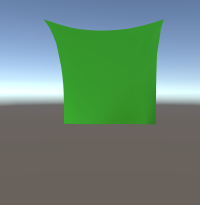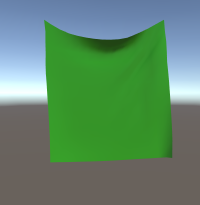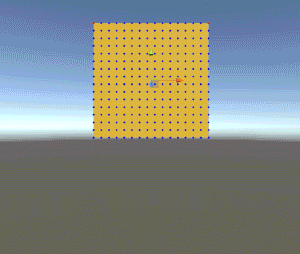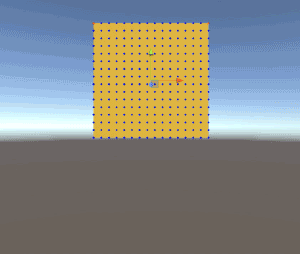Distance Constraints 
Distance constraints link pairs of particles together, forcing them to keep a certain distance (we will call this distance the "rest lenght" of the constraint) between them. Obi creates a stretch constraint for each edge of your cloth mesh, or for each segment of your rope. These constraints are vital to the look of your cloth and ropes, so understanding all their parameters is crucial.
Stretching scale
This is a scale factor for the rest lenght of each constraint. The initial rest lenght of any distance constraint is a fixed value set by the ObiActor using it. You can increase this distance (making the constraints expand) by setting a scale factor > 1, or reduce it (making the constraints shrink) by using a scale factor < 1.



Stretch compliance (m/N)
This controls how much constraints will resist a change in length. At high values, constraints will offer little resistance to stretching/compression, making the cloth/rope look elastic. Low values will increase the constraint stiffness. A value of zero (the default) will try to achieve complete stiffness, whether or not it is achieved depends on the simulation budget (timestep size and amount of distance constraint iterations).


Max Compression
This is the percentage of compression allowed by the constraints before kicking in. A value of 0 will cause constraints to resist any compression, with a value of 1 they won't resist compression at all. A value of 0.5 will cause the constraints to resist compression once their length is below 50% of their rest length. Very light cloth (like silk, or a fine net) will benefit of high slack values.